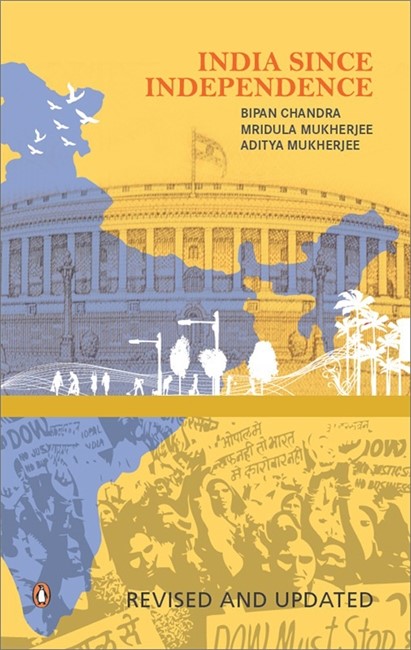
Availability
available
Original Title
India Since Independence
Subject & College
Publish Date
2008-01-01
Published Year
2008
Publisher, Place
Total Pages
788
ISBN 13
9780143104094
Country
India
Average Ratings
Readers Feedback
India Since Independence
Book Review : Dr. Sambhaji Vyalij MGV's Loknete Vyankatrao Hiray Arts, Science and Commerce College Panchavati Nashik "India Since Independence" by Bipan Chandra is a...Read More
Sambhaji Vyalij
India Since Independence
Book Review : Dr. Sambhaji Vyalij MGV’s Loknete Vyankatrao Hiray Arts, Science and Commerce College Panchavati Nashik
“India Since Independence” by Bipan Chandra is a comprehensive and well-regarded account of India’s history from 1947 to the 1990s. The book offers an in-depth analysis of India’s political, social, and economic developments since independence. Bipan Chandra, a renowned historian, brings a Marxist perspective to the analysis of India’s post-independence trajectory.
The book traces India’s journey from the euphoria of independence in 1947 to the challenges the country faced in the following decades. It covers a broad range of topics, including the challenges of nation-building, the role of the Congress Party, the rise of regional and caste-based politics, the development of a mixed economy, the emergence of new social movements, and India’s foreign policy. Chandra also examines the complex relationships between the state, society, and the economy.
Chandra’s writing is clear and accessible, making the complex historical, political, and economic developments easy to understand for both general readers and scholars. He successfully blends scholarly rigor with an engaging narrative style.
The book provides a rich historical context for understanding India’s post-independence developments. Chandra does not just focus on political leaders but examines the broader social and economic context in which they operated.
The book emphasizes the importance of social and economic issues in shaping the country’s history. It does not simply focus on political events but also looks at how poverty, inequality, land reforms, industrialization, and education have played key roles in India’s development.
While Chandra acknowledges Jawaharlal Nehru’s contributions to the building of the Indian state, he is also critical of some of Nehru’s policies, especially in terms of economic planning and the pace of industrialization. This critical analysis provides a balanced perspective.
Chandra’s Marxist perspective offers an important lens through which to understand the dynamics of class, caste, and politics in India. This perspective also critiques the role of capitalism, bureaucracy, and elites in shaping India’s post-independence trajectory.
The Marxist approach, while providing a unique lens, can sometimes feel one-dimensional for readers who might be looking for a more neutral or diverse analysis of India’s development. This ideological bias might limit the book’s appeal to certain readers.
Although the book provides an in-depth analysis of political and economic history, it does not delve deeply into cultural and intellectual developments. Readers interested in art, literature, and cultural movements might find the book lacking in this regard.
In its detailed examination of politics, Chandra often gets into intricate details of events and policies that may be overwhelming for casual readers. This depth, while valuable for scholars, might alienate general readers looking for a more concise narrative.
“India Since Independence” is a well-rounded and critically important work for anyone interested in understanding the complexities of India’s post-independence history. Bipan Chandra’s balanced analysis, critical approach, and ability to connect various facets of India’s history make it a must-read for students, historians, and anyone with a keen interest in modern Indian history. While its Marxist slant and detail-heavy style may not appeal to all readers, its historical rigor and depth make it an indispensable resource for understanding India’s struggles and achievements since independence.
